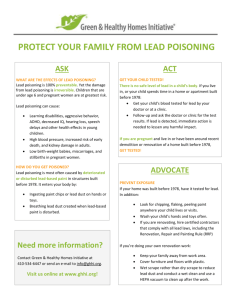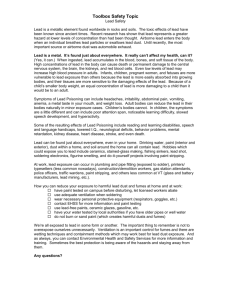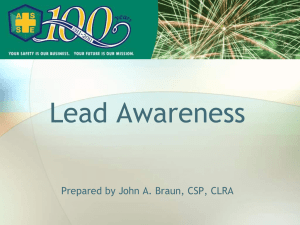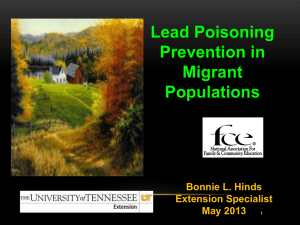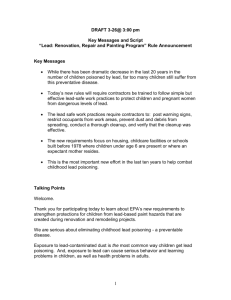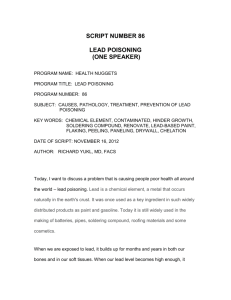the importance of a home inspection
advertisement
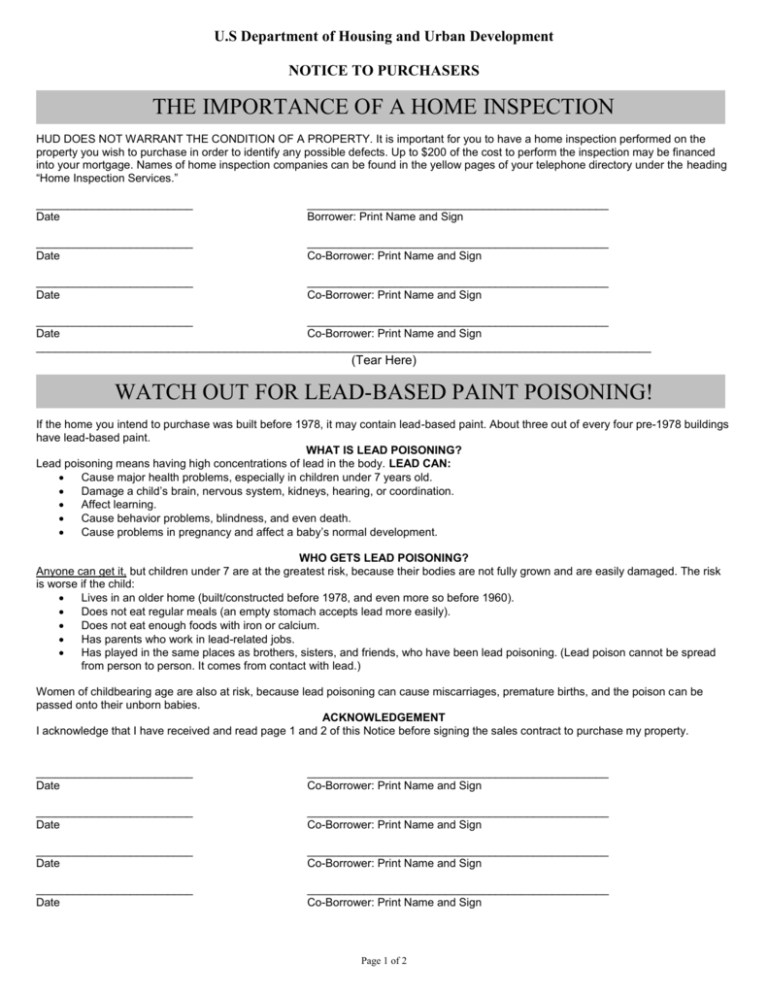
U.S Department of Housing and Urban Development NOTICE TO PURCHASERS THE IMPORTANCE OF A HOME INSPECTION HUD DOES NOT WARRANT THE CONDITION OF A PROPERTY. It is important for you to have a home inspection performed on the property you wish to purchase in order to identify any possible defects. Up to $200 of the cost to perform the inspection may be financed into your mortgage. Names of home inspection companies can be found in the yellow pages of your telephone directory under the heading “Home Inspection Services.” _________________________ Date ________________________________________________ Borrower: Print Name and Sign _________________________ Date ________________________________________________ Co-Borrower: Print Name and Sign _________________________ Date ________________________________________________ Co-Borrower: Print Name and Sign _________________________ ________________________________________________ Date Co-Borrower: Print Name and Sign __________________________________________________________________________________________________ (Tear Here) WATCH OUT FOR LEAD-BASED PAINT POISONING! If the home you intend to purchase was built before 1978, it may contain lead-based paint. About three out of every four pre-1978 buildings have lead-based paint. WHAT IS LEAD POISONING? Lead poisoning means having high concentrations of lead in the body. LEAD CAN: Cause major health problems, especially in children under 7 years old. Damage a child’s brain, nervous system, kidneys, hearing, or coordination. Affect learning. Cause behavior problems, blindness, and even death. Cause problems in pregnancy and affect a baby’s normal development. WHO GETS LEAD POISONING? Anyone can get it, but children under 7 are at the greatest risk, because their bodies are not fully grown and are easily damaged. The risk is worse if the child: Lives in an older home (built/constructed before 1978, and even more so before 1960). Does not eat regular meals (an empty stomach accepts lead more easily). Does not eat enough foods with iron or calcium. Has parents who work in lead-related jobs. Has played in the same places as brothers, sisters, and friends, who have been lead poisoning. (Lead poison cannot be spread from person to person. It comes from contact with lead.) Women of childbearing age are also at risk, because lead poisoning can cause miscarriages, premature births, and the poison can be passed onto their unborn babies. ACKNOWLEDGEMENT I acknowledge that I have received and read page 1 and 2 of this Notice before signing the sales contract to purchase my property. _________________________ Date ________________________________________________ Co-Borrower: Print Name and Sign _________________________ Date ________________________________________________ Co-Borrower: Print Name and Sign _________________________ Date ________________________________________________ Co-Borrower: Print Name and Sign _________________________ Date ________________________________________________ Co-Borrower: Print Name and Sign Page 1 of 2 WHERE DOES IT COME FROM? The lead hazards that children most often touch are lead dust, leaded soil, loose chips and chewable surfaces painted with lead-based paint. A child may be harmed when it puts into its mouth toys, pacifiers, or hands that have leaded soil or lead dust on them. Lead also comes from: * Moving parts of windows and doors that can make lead dust and chips. * Lead-based paint on windows, doors, wood trim, walls and cabinets in kitchens and bathrooms, on porches, stairs, railings, fire Escapes and lamp posts * Soil next to exterior of buildings that have been painted with lead-based paint and leaded gasoline dust in soil near busy streets. * Drinking water. (pipes and solder) * Parents who may bring lead dust home from work on skin, clothes, and hair. * Colored newsprint and car batteries. * Highly glazed pottery and cookware from other countries. * Removing old paint when refinishing furniture. In recent years some uses of lead in products that could cause lead poisoning have been reduced or banned. This is true for lead in gasoline, lead in solder used in water pipes, and lead in paint. Still, a great deal of lead remains in and around older homes, and lead-based paint and accompanying lead dust are seen as the major sources. HOW DO I KNOW IF MY CHILD IS AFFECTED? Is your child: * cranky? * unable to concentrate? * vomiting? * hyperactive? * tired? * playing with children who have these symptoms? * unwilling to eat or play? *complaining of stomach aches or headaches? These can be signs of lead poisoning. However, your children might not show these signs and yet be poisoned; only your clinic or Doctor can test for sure. WHAT CAN I DO ABOUT IT? Your child should first be tested for lead in the blood between six months and one year old. Ask the clinic or your doctor to do it during a regular checkup. Your doctor will tell you how often you should have your child tested after that. A small amount of led in the blood may not make your child seem very sick, but it can affect how well he or she can learn. If your child does have high amounts of lead in the blood, you should seek treatment and have your home tested for lead-based paint and lead dust. HOW DO I KNOW IF MY HOME HAS LEAD-BASED PAINT? The appraisal does not determine whether a home actually has lead-based paint. It only identifies whether there are defective paint surfaces in a home that might have lead-based paint. Therefore, the only way you can know for sure is to have the home tested by a qualified firm or laboratory. Both the interior and exterior should be tested. You should contact your local health or environmental office for help WHAT DO I DO IF MY HOME DOES HAVE LEAD? Do not try to get rid of lead-based paint yourself, you could make things worse for you and your family. If your home contains lead-based paint, contact a company that specializes in lead-based paint abatement. Have professionals do the job correctly and safely. This may cost thousands of dollars, depending on the amount of lead-based paint and lead dust found in your home, but it will also protect you and your children from the effects of lead poisoning. In the meantime, there are things you can do immediately to protect your child: * Keep your child away from paint chips and dust. * Wet-mop floors and wipe down surfaces often, especially where the floors and walls meet. Be sure to clean the space where the window sash rests on the sill. Keeping the floor clear of paint chips, dust and dirt is easy and very important. Do not sweep or vacuum lead-based paint chips or lead dust with an ordinary vacuum cleaner. Lead dust is so fine it will pass through a vacuum cleaner bag and spread into the air you breathe. * Make sure your children wash their hands frequently and always before eating. Wash toys, teething rings, and pacifiers frequently. WILL HUD INSURE A MORTGAGE LOAN ON A HOME WITH LEAD-BASED PAINT? HUD may insure a mortgage on a house even with lead-based paint if defective paint surfaces are treated. HUD will not remove it. You will have to pay for the cost of removal yourself. Page 2 of 2
![[Agency] recognizes the hazards of lead](http://s3.studylib.net/store/data/007301017_1-adfa0391c2b089b3fd379ee34c4ce940-300x300.png)
